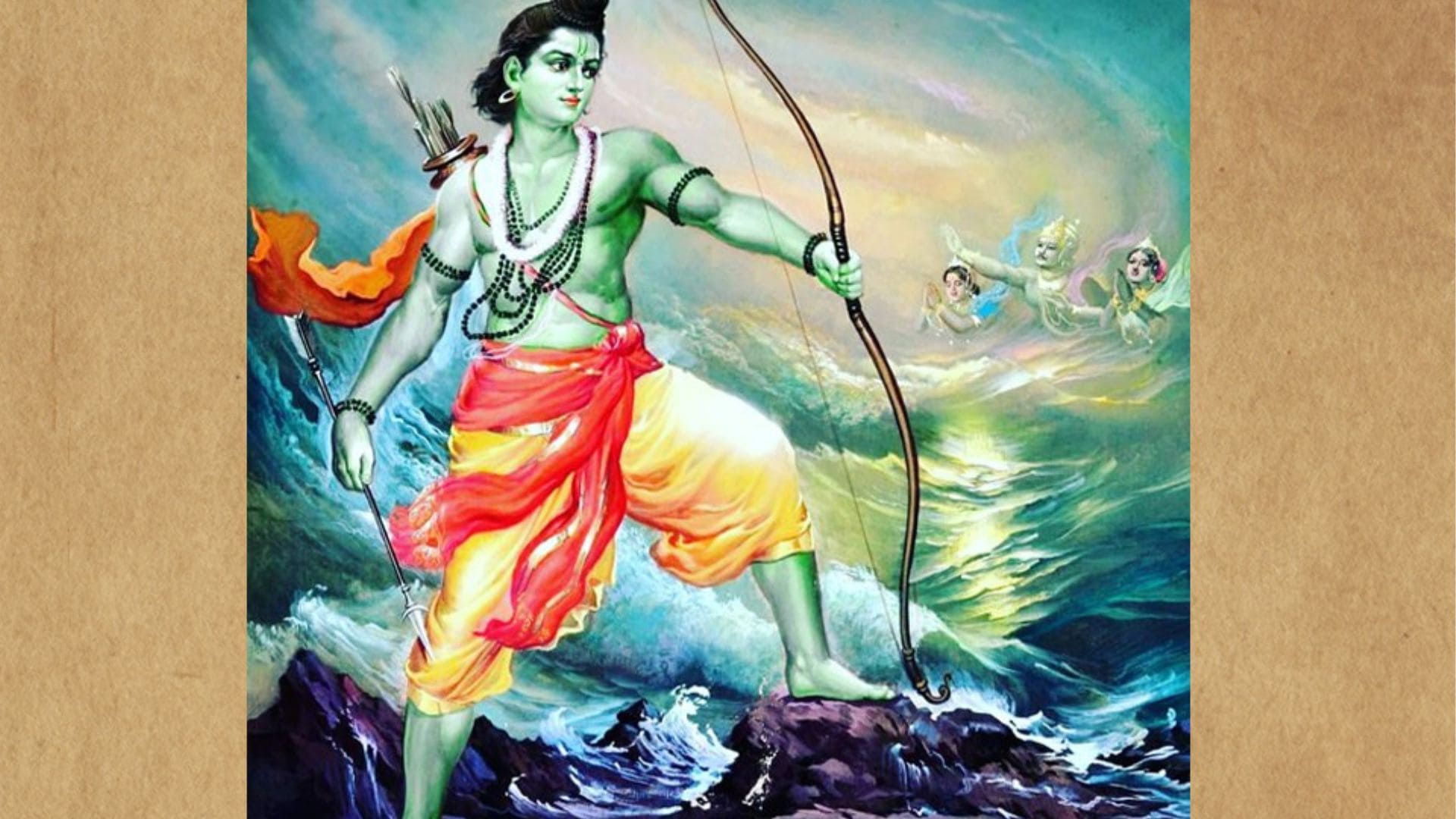
Dhrumkulya and Marukantara: Shri Ram’s Brahmastra and the Birth of the Thar Desert
Dhrumkulya is where Shri Ram fired his Brahmastra, which he had called upon to dry up the ocean when he had not revealed himself to help the former cross the sea to reach Lanka. The place where the arrow fell came to be called Marukantara. In the modern day, the region is said to lie in Rajasthan, extending from western Marwar (Maru Pradesh) to the northwest of the Aravali range to Bikaner.
Shri Ram’s arrow turned the sea into a desert. Marunkantara in the modern-day is considered to extend from western Marwar, also known as Maru Pradesh (which is part of the Thar Desert) to Kazakhstan. It has brackish water, and the wind blows at speed.
To my north there is a very holy region known by the name of Drumkulya and well known in the world like you. Dwelling in that region, numerous sinful marauders of terrible aspect and deeds, the foremost of whom are Abhiras, drink my water. I cannot tolerate evil in the form of the contact of my waters with those people of sinful deeds. This excellent shaft may therefore be rendered effective by being allowed to fall in that region”.
The arrow, which was charged with the power of Brahmastra was suggested to be diverted to Dhrumkulya by Varuna. The place is said to be infested by pirates and dacoits who exploited the sea.
After having dried up the cavity of the sea, Shri Ram also blessed the land with a boon, which turned the place ideal for raising cattle, yielding plenty of roots, fruits, milk, and honey and also rich with fragrant herbs.
Similar Stories
An exploration of respect, trust, and gender equality in relationships through the lens of Lord Ram and Sita’s story from the Ramayana.
Discover the transformative story of Satyavati, the fisherwoman who became a queen and shaped the destiny of the Kuru dynasty. From her celestial fragrance gifted by Sage Parashar to her pivotal role in King Shantanu's life, explore how her decisions and relationships set the stage for the Mahabharata's epic saga and the great war of Kurukshetra.
Explore the complex character of Karna from the Mahabharata, the eldest son of Kunti and the Sun god Surya. Raised by a charioteer and rejected by Kshatriya society, Karna became a powerful warrior and archer under Guru Parashuram. Despite his loyalty to Duryodhan, Karna's story is often misunderstood due to historical interpretations. This video delves into the nuances of his character, examining his motivations, struggles with identity, and tragic fate.
Astrology, Mantras, Events, Stories & More.
